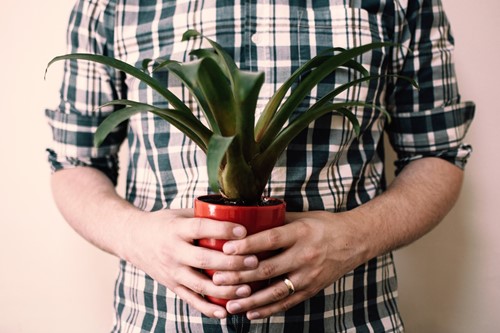
If you love your plants and want to take them with you when you move, there are some ways to make the journey safer and easier. You can even take samples from an outdoor garden to plant in your new yard. However, there are some important things to consider when moving with plants. Here’s what you should know:
Every moving company has a list of items they won’t move. Some have a list of items they won’t cover damage for but will still transport. Live plants are very common on both lists. Research your choice of moving company to clarify what they will and will not move or take with them. This means that you might need to move especially heavy plants yourself, so make sure you have the right tools or a friend to help you.
The good news is that houseplants will travel much better in a personal car than in a large moving vehicle. In your car, you can help maintain a steady temperature and protect your plants from harsh sunlight, two of the major sources of plant damage in transit.
Legally, you cannot travel or move internationally with live plants. There are exceptions, but they may require additional paperwork, fees or specific packing protocol. Research your destination to determine what they allow. You can usually find this information on airports or other major travel websites.
It’s also important to know that even if you’re moving within the United States, there are restrictions on what you can bring across state lines. Hawaii, California and Florida are all examples of states with strict regulations about live plants.
While most houseplants are excellent at adapting to your home environments, a drastic change in environment will cause them stress. Plant stress manifests in several ways depending on the variety, but often you can expect yellowing or browning of leaves, dropping leaves or stunted growth. Also, plants weakened by travel or extreme temperature differences can be more susceptible to pests and will require careful monitoring in the early days at your new home.
Moving your plants doesn’t have to be stressful for the humans involved. While the plants themselves may show some signs of distress, as long as you move them carefully, they will recover and thrive with you in your new home.

I was born and raised in the town of Newbury, Vermont. Before, during, and after obtaining my Bachelor’s degree from Johnson & Wales University in Providence, Rhode Island, I worked in the hospitality industry throughout New England. One of my proudest achievements is being one of the youngest Certified Sommeliers, having passed the exam at the age of 21.
Each client and customer comes to the table with a different set of needs and wants. Utilizing my career history and life experience allows me to apply those elements to each Real Estate endeavor. I take great pride in providing a creative and innovative experience to everyone I work with by utilizing current technology and trends. I also provide professional-level photography and videography including production not only for my seller clients but also for buyers who are looking at a property from afar.